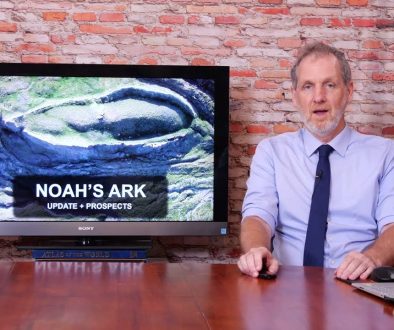Ark Site Featured in Popular Mechanics
 A mountain in Turkey shows evidence of human activity in the area around the time the Biblical flood is said to have taken place.
A mountain in Turkey shows evidence of human activity in the area around the time the Biblical flood is said to have taken place.
BY TIM NEWCOMB PUBLISHED: NOV 1, 2023
Archaeologists believe they may have discovered the final location of Noah’s Ark on Turkey’s Mount Ararat.
Soil samples from atop the highest peaks in Turkey reveal human activity and marine materials.
Dating of the rock and soil from the location match with Biblical timing of Noah’s Ark.
Researchers from a trio of universities in Turkey and the United States have spent roughly a year analyzing the rock and soil in the famous Durupinar formation on Mount Ararat, the highest mountain in Turkey. They believe that the boat-shaped site may hold the ruins of the legendary Noah’s Ark.
The Biblical account of Noah tells of God instructing Noah to build a giant ark to spare his family and pairs of animals from an impending flood meant to destroy the evil and wickedness running rampant on Earth. Noah’s Ark is said to have come to rest on the mountains of Ararat following a 150-day flood about 5,000 years ago.
Researchers now believe they’ve found evidence of human activity near the boat-shaped formation in the mountains from between 5500 and 3000 BC.
Faruk Kaya, AICU vice rector professor, says that analyzing rocks and soil from the uniquely shaped area on the mountain shows human activity in the region, timed to the years following the flood in the legend of Noah’s Ark. “In terms of dating, it is stated that there was life in this region as well,” Kaya says, according to The Daily Mail. “This was revealed in the laboratory results.”
Human activity, however, does not a Biblical account prove. The Durupinar formation has been put forth as a potential ark resting place for many years, and has received extensive attention from those hoping to find Noah’s Ark. Despite the hype, archaeologists have consistently reaffirmed over the years that the formation is natural, not the result of a petrified shipwreck, and that there is no geologic record of a global flood like the one described in religious texts. Some believe that a more local flood may have been possible, but that is also debated.
The team says it isn’t currently possible to say that Noah’s Ark itself was at the Durupinar site.
“With the dating, it is not possible to say that the ship is here,” Faruk Kaya, one of the researchers on the project, said according to Turkish news publication Hurriyet. “We need to work for a long time to reveal this. In the next period, we agreed to carry out a joint study under the leadership of ITU, Andrew University and AICU. Three universities will continue their work in this field in the future.”
For now, the scientists point to the evidence in the soil of “clayey materials, marine materials, and seafood,” according to Hurriyet, within the geological formation as evidence.
The team of researchers placed a renewed focus on the region in 2021 by exploring varying geological areas—including the Durupinar formation, which is made of limonite that bears resemblance to a ship like Noah’s Ark. Further exploration led the team to take the rock and soil samples from the country’s highest peaks for laboratory analysis.
The story of God, Noah, his family, the animals in his care, and Noah’s Ark has caused much debate for centuries. The search for proof of this event will likely continue for some time, and only that time will tell if it is there to be found.
Archaeologists Think They Might Have Found the Real Noah’s Ark






